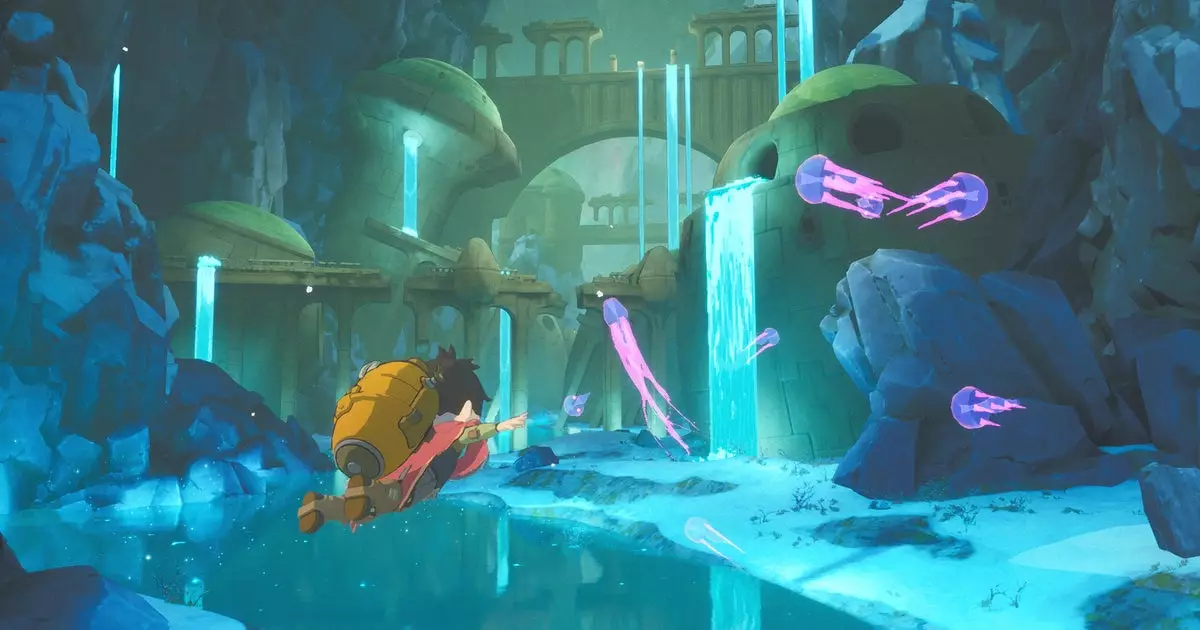Studio Ghibli has, for decades, defined a unique narrative and aesthetic landscape, creating worlds filled with magic, nature, and flight. Drawing inspiration from this influential style, the game “Europa” attempts to carve out its own niche within this enchanting realm. Players familiar with Ghibli’s iconic visuals—like sweeping blue skies, lush greenery, and whimsical narrative arcs—are likely to feel an immediate sense of nostalgia and comfort as they explore the game’s offerings. Europa introduces players to an immersive experience that promises not only picturesque landscapes but also engaging puzzles and stories that evolve as one delves deeper into its world.
In Europa, players navigate through the eyes of Zee, an android protagonist equipped with various movement abilities. The game claims an estimated playtime of 3-4 hours, during which players will encounter a series of puzzles, secrets, and perhaps unexpected challenges. One notable aspect of gameplay is the fluidity of movement, especially as Zee unlocks new capabilities, ranging from a simple jetpack boost to soaring across sky islands. These mechanics aim to cultivate an engaging physicality that enhances exploration, reminiscent of the fun experienced in other puzzle-adventure games. The design choice likely stems from the developers’ understanding of the importance of interactivity in building immersive worlds.
Helder Pinto banked on his own experiences as an environment artist at Blizzard, having worked on games like Overwatch, to shape Europa’s aesthetic. The decision to create Europa as a side project speaks volumes about Pinto’s passion for blending distinct art styles with interactive narratives. However, one of the underlying challenges most Ghibli-inspired games face is been their tendency to mimic the beloved visuals of these films without successfully translating their deeper meanings and emotional weight. The fragility of capturing what makes the Studio Ghibli experience so profound poses a significant hurdle in immersive game design.
There has been a wave of Ghibli-esque games in recent years, and while they often feature beautiful animation and fantastical elements, they sometimes reduce the complexity and richness of the original artworks. Titles like Ni no Kuni: Wrath of the White Witch showcase Ghibli’s influence, especially regarding visual storytelling, but also fall into the trap of offering a mere homage rather than a genuine narrative experience. Players often find themselves in situations resembling “Ready Player Miyazaki”, which hints at a superficial engagement with Ghibli’s folklore rather than a deep dive into its evocative storytelling structure.
Could Europa reshape this narrative? Could it breathe fresh air into a genre that often feels like an echo rather than an exploration? While the game has been critiqued for potentially leaning too heavily on familiar tropes, early impressions suggest that it might offer something unique. Perhaps the allure lies not only in its stunning visuals but also in its ability to invite players into a lighthearted adventure free of the weight of expectations often tied to Ghibli’s legacy.
At a price point of approximately £11.51/€13.31/$13.49 on Steam, Europa seems accessible enough to pique the curiosity of Ghibli fans and adventure enthusiasts alike. Whether the journey unfolds as a mere escapade or a profound experience remains to be seen, but it is clear that Europa sets forth a promising endeavor into a beloved genre.


Leave a Reply